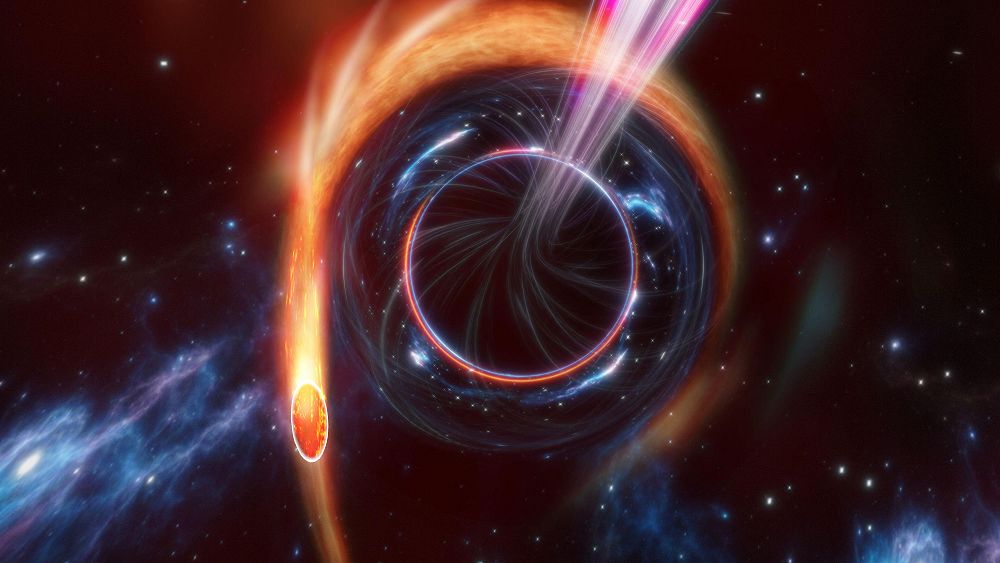Scientists have managed to observe a very rare phenomenon that occurred 8.5 billion light-years from planet Earth, in which a huge black hole appears to devour a star, then spits out the waste of its “meal” in the form of a luminous flux.
The black hole has a gravitational pull that causes any star that comes close to it to tear apart, as the material the star is made of disintegrates, then rotates very rapidly around the black hole before swallowing part of it forever.
“tidal break”
This phenomenon called “tidal breaking” is rarely accompanied by the emission of a luminous particle flux, which comes from the star’s matter and is transient and travels at a speed close to the speed of light.
Two studies published this week in the journals Nature and Nature Astronomy say the last time such an event was observed was in 2012.
New monitoring methods have since been invented, including a large-capacity camera installed at the Palomar Observatory in California, which allows for “a survey of the sky,” Susana Fergani, a researcher affiliated with the University’s National Center for Scientific Research of Paris-PSL Observatory, he told AFP.
The astrophysicist who participated in the research explained that this telescope, known as the Wicky Transient Facility, “monitors dozens of luminous fluxes in the sky every night and can choose the most important of them”.
Compressed toothpaste tube
In fact, one of these explosions seemed out of the ordinary, as it was neither a supernova (the explosion of a star at the end of its life that produces an unusual brightness), nor a gamma-ray burst (the most powerful source of light in the universe).
And in an effort to provide a clearer view, a number of multinational astronomers have coordinated with each other to arm instruments from around the world to observe the phenomenon on a variety of wavelengths, from X-rays to radio waves.
These include the Northern extended millimeter array (NOEMA) radio telescope in the French Alps and the spectrograph on the European Southern Observatory’s (ESO) Very Large Telescope in Chile.
Scientists determined that the luminous flux originated about 8.5 billion light-years from Earth around a black hole that likely lurks at the center of the host galaxy.
Dubbed AT2022cmc, the jet is “a billion times more powerful than the X-ray luminosity of our Sun,” said Susanna Fergani. Its duration is very short, 30 days. “The AT2022cmc flux is transient, unlike the jets of active galactic nuclei, which span much larger scales,” added the researcher. This jet appears to have been caused by the black hole that tore the star apart.
The jet is unlikely to come from light swallowed by the black hole, as nothing can escape these “cosmic goblins,” but rather from the accretion disk that surrounds the black hole by emitting particles at its ends. Just like a squeezed tube of toothpaste, explains the European Observatory.
This phenomenon, still not well understood, could be caused by the rotation speed of the black hole, as it rotates on itself at a speed that allows it to produce this jet. The future Large Synoptic Survey Telescope (LSST) under construction in Chile should allow us to observe other explosions of this type, and therefore better understand the extreme environments surrounding black holes.


